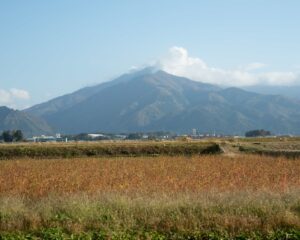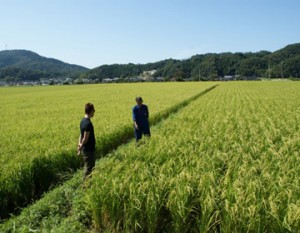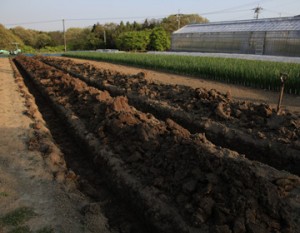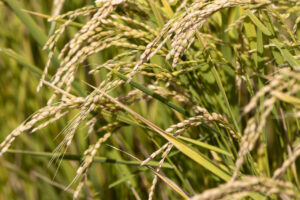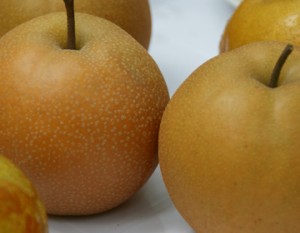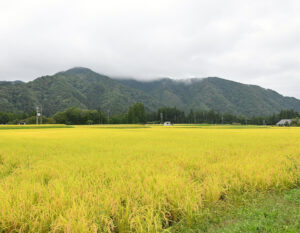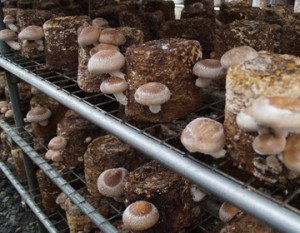Ishikawa Farm has an 80-year history of rice cultivation in Akaigawa Village, which has a population of less than 1,200 and is mainly engaged in agriculture and tourism. There is a third generation of rice farmers who love both growing and eating rice. We visited Mr. Hayato Ishikawa, who struggles with the beauty and harshness of nature.
A Beautiful Village Blessed with Nature Interwoven with Mountains
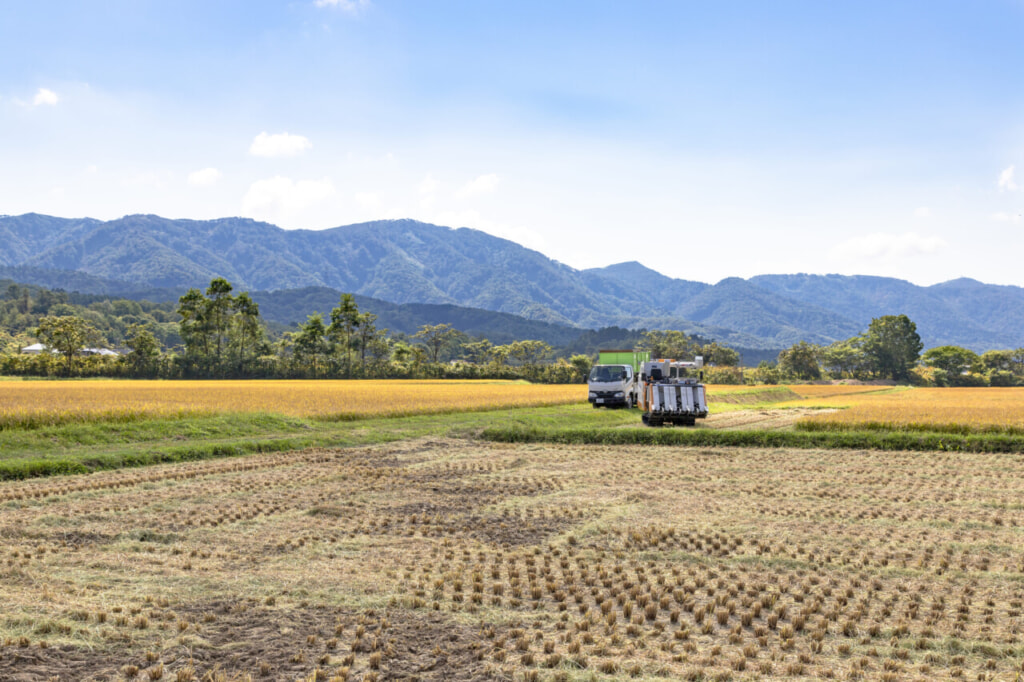
Akaigawa Village is located in the southwestern part of Hokkaido, about 40 km southwest of Otaru City, and has been attracting attention as a tourist spot in recent years as an area within a 30-40 minute drive from Otaru. It is known as a basin with a caldera-like topography with mountains surrounding the village from east to west, north to south, and south to north. It has an inland climate unique to basins with large temperature differences between day and night, summer and winter, and is also one of the areas with the heaviest snowfall. The village boasts abundant tourist resources that attract many visitors , such as the spectacular view of “Cloud Lake,” where fog flows into the basin and accumulates on clear autumn mornings, and “Kiroro Resort,” a ski slope blessed with powder snow.
The village also grows many agricultural products. The village grows a wide variety of products, including rice, pumpkins, broccoli, mini-tomatoes, melons, and watermelons, all of which are popular for their sweetness due to the difference in temperature between day and night.
Mr. Ishikawa’s delicious rice, which he produces in a straight line for rice
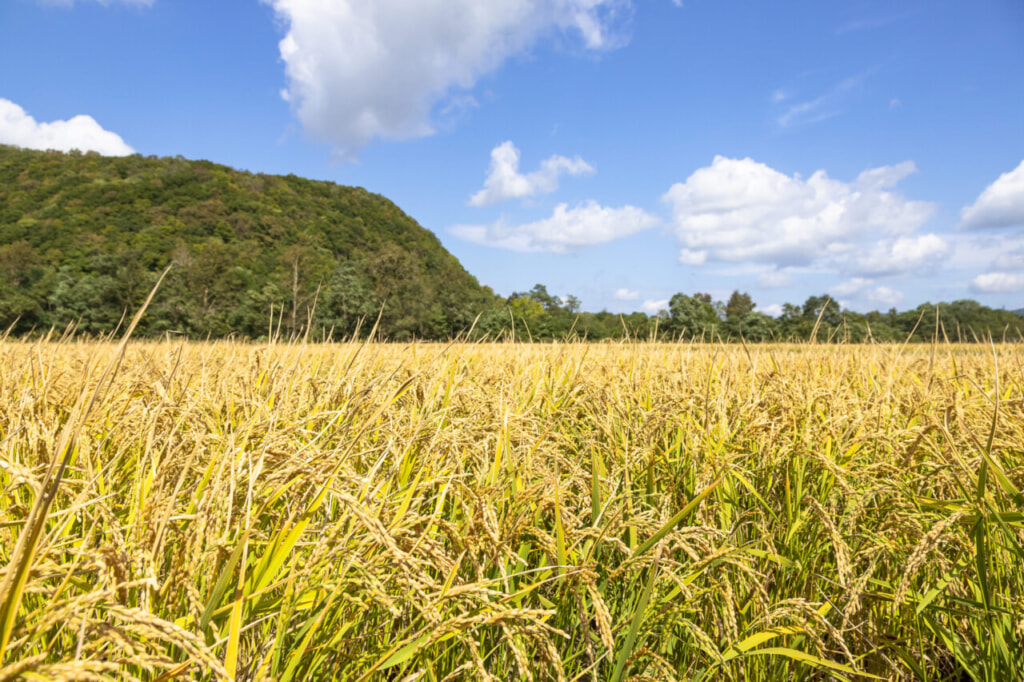
Ishikawa Farm is located in the Kyokugawa district of the scenic village of Akaigawa, where he grows paddy rice. Mr. Hayato Ishikawa, the third generation of rice farmers who started rice farming in 2004, loves rice.
He says, “Going to the rice fields on a sunny day and observing the different faces of the rice each day, and then eating the delicious rice after polishing are both essential to my work. Both are essential for me, and rice is my ‘hobby.
I eat three cups of rice at one meal,” he adds happily.
After graduating from junior high school, Ishikawa stayed in Otaru for high school and then worked as an office worker in Sapporo. Even though he was away from his hometown, the rice paddies started by the first generation of farmers who moved to the village from Shikoku were always somewhere in his mind. Even though I was working at other jobs, I always wanted to return to my hometown someday to grow rice,” he said.
The typhoon made him decide to return to his hometown with his wife, which he says was a very natural decision.
Clear water, temperature difference, soil, and sun determine the taste.
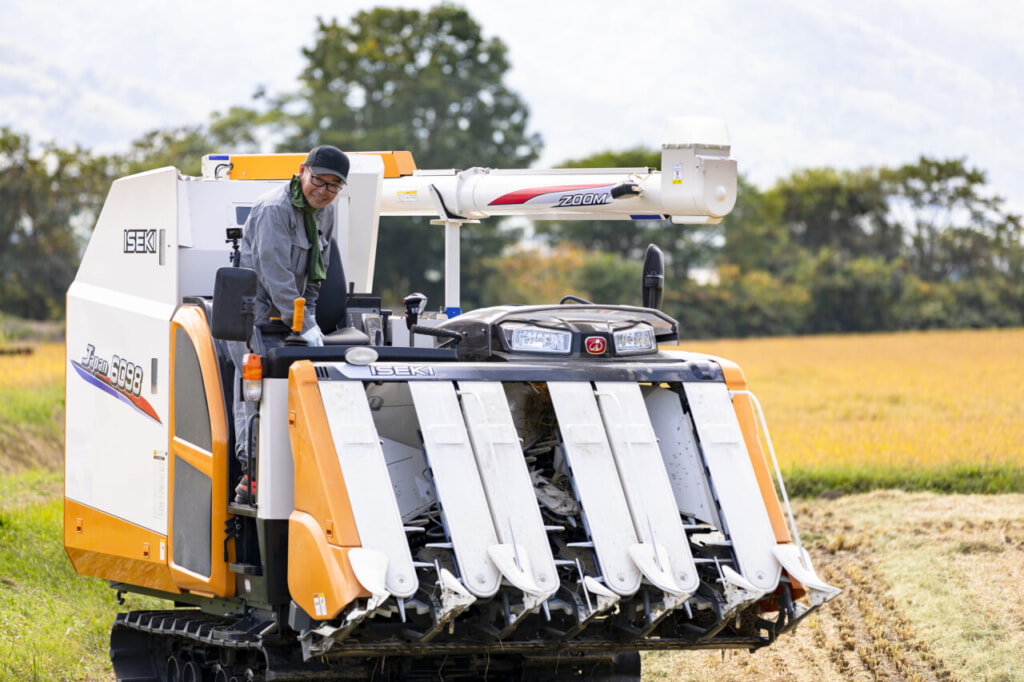
Ishikawa Farm produces three varieties of rice : Yumepirika, Nanatsuboshi, and Yukisayaka, which are representative of Hokkaido’s brand-name rice.
All of these varieties are the pride of Hokkaido. Yumepirika” in particular is a rice with characteristics similar to glutinous rice. It has a soft, glutinous texture and a sweet, rich flavor with a hint of a special aroma,” says Ishikawa.
Mr. Ishikawa’s rice grows well in the favorable conditions provided by the melted snow nurtured by the mountains including Mt.
Mr. Ishikawa’s rice grows well and quickly. “Because the village of Red River is surrounded by mountains, even if a cloud rolls in, it will be blown away by the mountains. This is why the sun shines down on the rice, especially in the summer. The rice exposed to the sun performs photosynthesis and stores a lot of starch. Furthermore, because of the temperature difference between day and night, the rice’s metabolism is suppressed at night, and the starch is packed tightly into each grain of rice. This makes the rice firm, sticky, and sweet.
Another advantage of Mr. Ishikawa’s rice paddies is that they are surrounded by mountains and are not exposed to strong winds. The rice is less likely to be buffeted by strong winds, so there is no extra stress on the rice.
The rice absorbs the minerals of the mountains from the clear water, resulting in large, glossy, delicious rice.
Ishikawa’s “Yumepirika” rice has often won prizes in the annual “Rice-1” Grand Prix held in the town of Rankoshi, Isoya County, with the aim of promoting delicious rice throughout Japan, and finally won the runner-up prize in 2021.
Mr. Ishikawa named his rice “Shemeshi,” which is printed prominently on the rice bag.
Shemesh” means the sun (morning sun) in Hebrew. He told us with a smile that he named the rice “Shemesh” because the presence of the sun (morning sun) is important to the rice he grows, and because it was a nice word.
Attention to water content makes the rice a favorite of chefs.
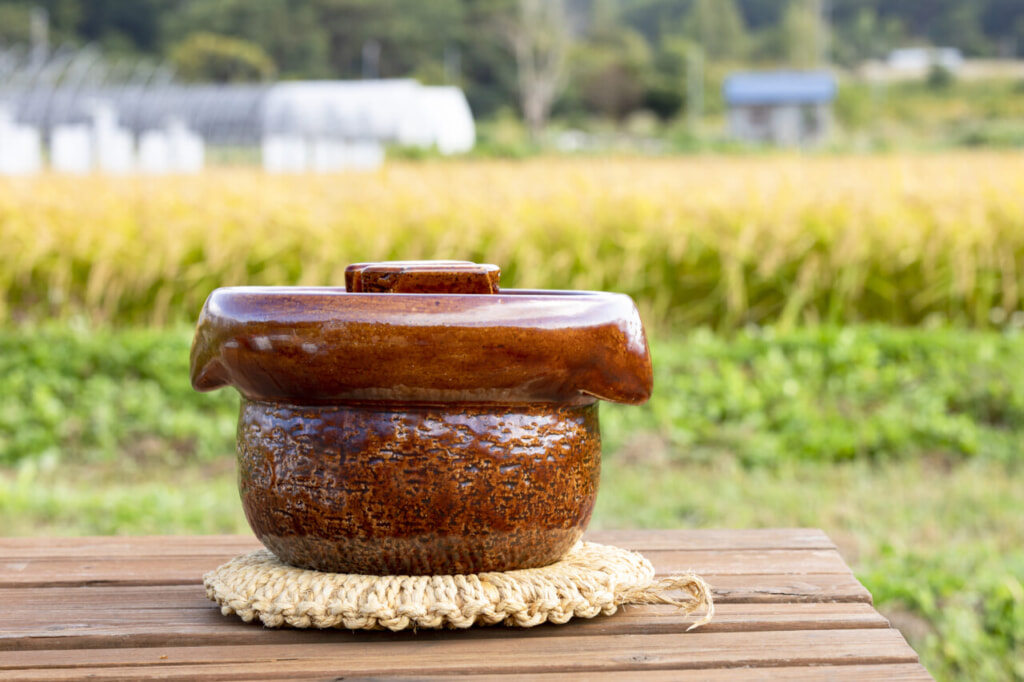
The temperature difference between day and night, the clear mineral-rich stream, and the high-quality soil… Akaigawa Village has all the favorable conditions for growing rice.
Mr. Ishikawa emphasizes that he wants people to eat rice with the optimum amount of moisture depending on when and under what circumstances they eat the rice.
The taste of rice is greatly affected by the amount of moisture contained in the grains. The ideal moisture content is 15-14%, but the moisture content varies depending on the weather and time of harvest.
Ishikawa says that in order to dry the rice evenly, he uses a large far-infrared dryer. He also says that the rice is not dried all at once, but is dried slowly over a long period of time because of his commitment to the taste of the rice.
We use a two-stage drying method. The first drying is stopped when the moisture content is 16.5%, and the rice is left to dry for about three days. When the rice is sealed, the water content of the chaff goes back and forth. When the rice is sealed, the water content of the chaff goes back and forth, with the higher water content giving way to the lower water content in an attempt to equalize.
Mr. Ishikawa has also succeeded in maintaining the quality of the rice by introducing a machine to sort out black rice, which has a slightly inferior taste, known as spotted rice. Every year, he repeats a trial-and-error process to find the best farming method for Hokkaido’s changing climate.
He has come to believe that the most important thing is to keep the roots firmly planted. If rice with healthy roots grows, it will produce large grains of rice. To achieve this, rice straw harvested in the fall is plowed in while the temperature is still high and mixed with the soil in the field. Then, “rice straw corrosion accelerator” is sprinkled to firmly promote fermentation and decomposition of the soil so that there will be no un-decomposed rice straw left in the soil when the temperature rises the next year. If this process is inadequate, gas will be generated from the soil when the temperature rises. When gas is produced, the roots of the rice plants are killed and subsequent growth is poor.
Ishikawa stresses that soil preparation after rice harvest is essential to create good roots for the next year.
Once the rice plants start to grow, I think I look only at the roots rather than the rice itself (laughs).
Mr. Ishikawa enjoys eating rice not only as a producer but also as a consumer. Many chefs fall in love with his rice. Tomonori Oikawa of Nihonbashi OIKAWA is one of them.
Tomo⾂ Oikawa of Naimonbashi OIKAWA is one of them. “I think ‘This rice must be delicious’ from the moment I open the lid of the pot,” he says. It’s just so sweet. Sweetness is umami. The sweetness is the flavor, the simplicity of the taste,” says Oikawa.
The customers who come to the restaurant are delighted by the taste of the soy sauce itself, he says.
Good food is simple. If you use bad food, you have to add all kinds of things.
Conveying the Appeal of Agriculture to the Next Generation of Farmers
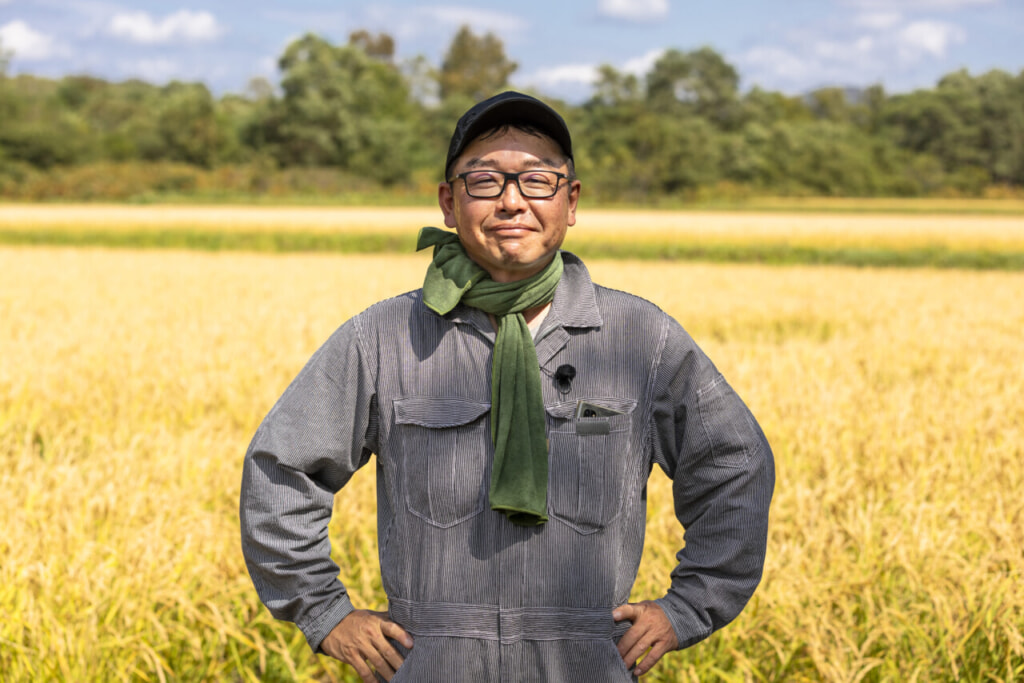
Mr. Ishikawa says he feels a sense of crisis in the fact that the bearers of agriculture are aging and young people are not attracted to the industry. The seven rice farmers in the area have joined together to form the “Red-Igawa Village Seiryukai” because they want to protect the rice paddies and rice in the Akaigawa area.
I love the village of Akaigawa. Even though we use different farming methods and sell our rice to different customers, we are all colleagues who use the same irrigation water to grow rice. I struggle every day to find ways to protect the delicious rice here,” he says.
He continues to work energetically, going to schools for on-site classes and working on online classes.
Eating healthy rice makes everyone feel better,” he says. I want to promote the appeal of rice to the younger generation. We are also putting a lot of effort into developing various events to stop the decline in farming.
In a closet, Mr. Ishikawa found a poem he wrote in the fourth grade of elementary school titled “Rice.
It’s beautiful.
It’s beautiful.
The rice shines in a golden brown.
The rice flutters softly.
Fluttering gently like ocean waves.
Delicious.
The rice is shiny and glossy.
The rice is very tasty.
It tastes as good as a small bird’s egg.
He says he wrote this poem when he was a child because he was so impressed by the taste of rice. I want to increase the number of children and the younger generation like me. With this thought in mind, Mr. Ishikawa will continue to take on the challenge of growing rice.




